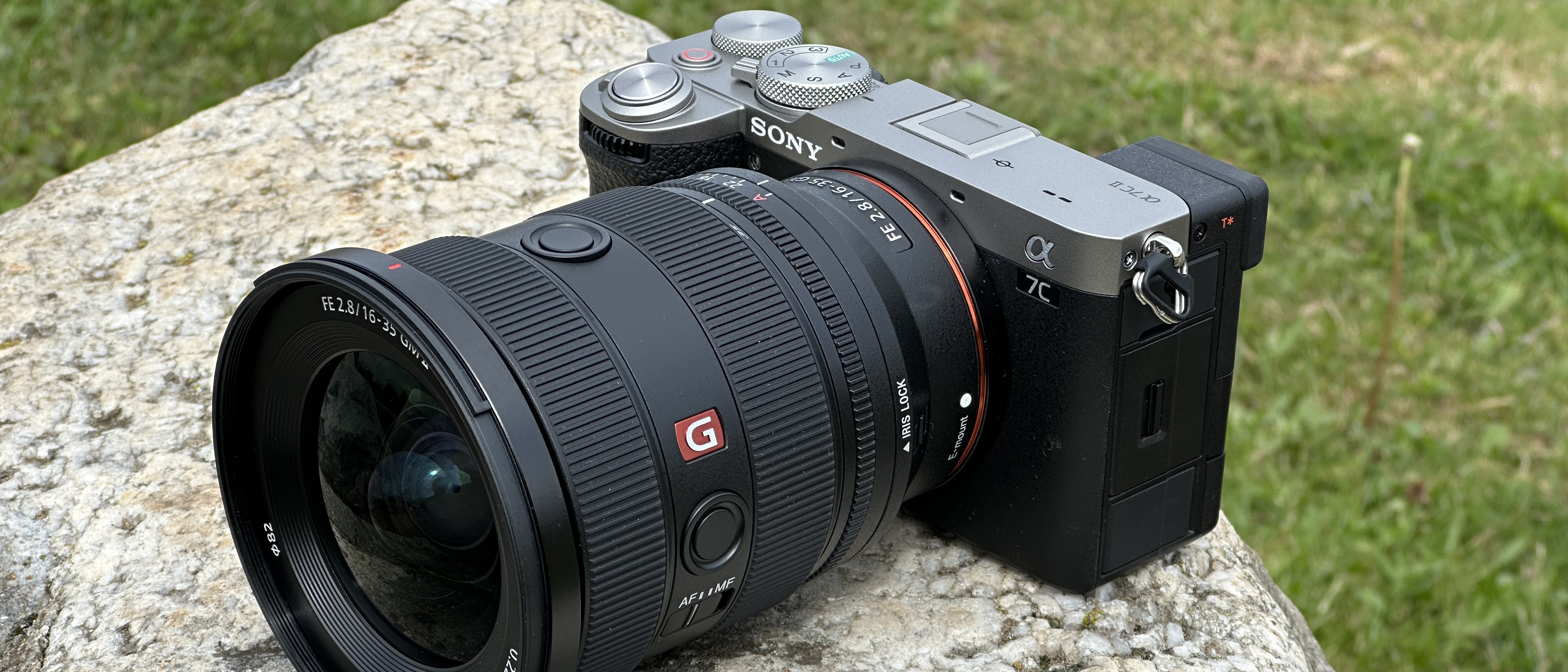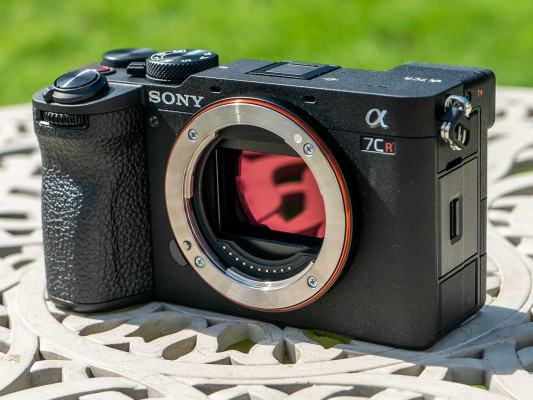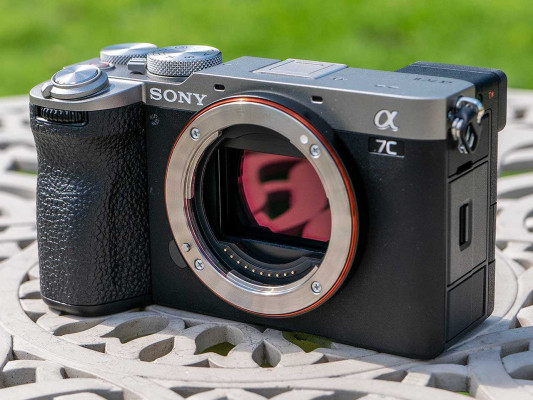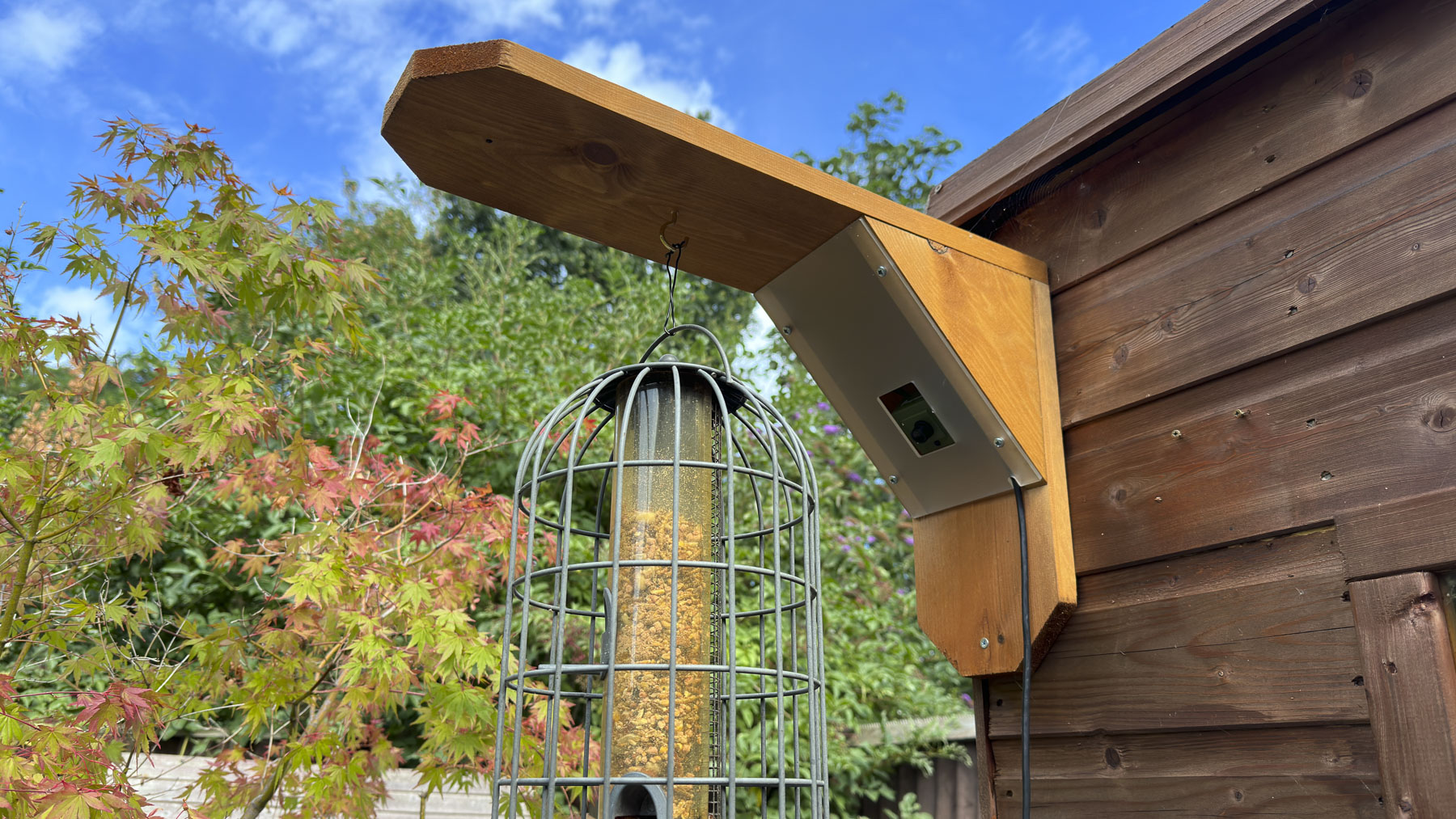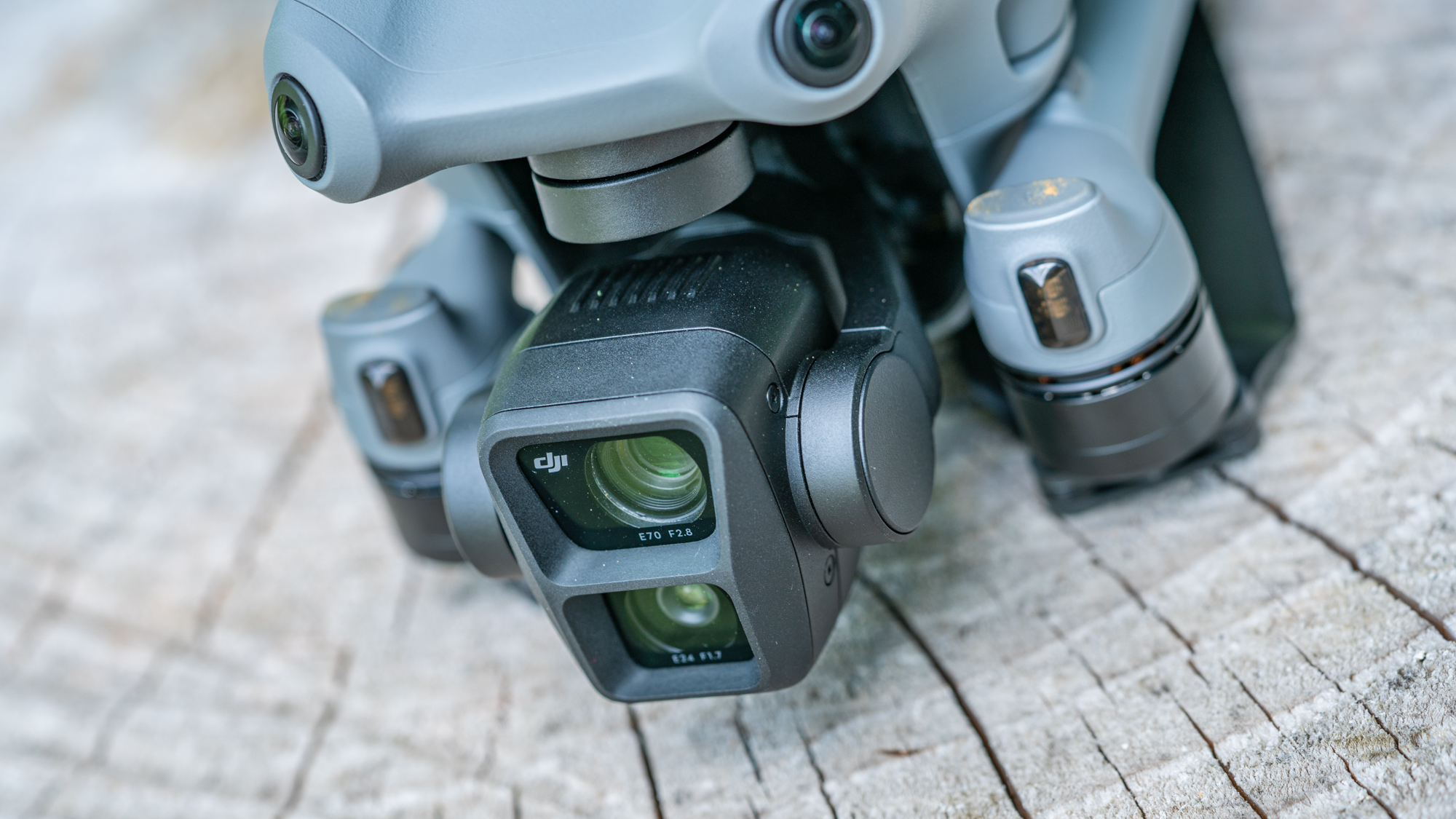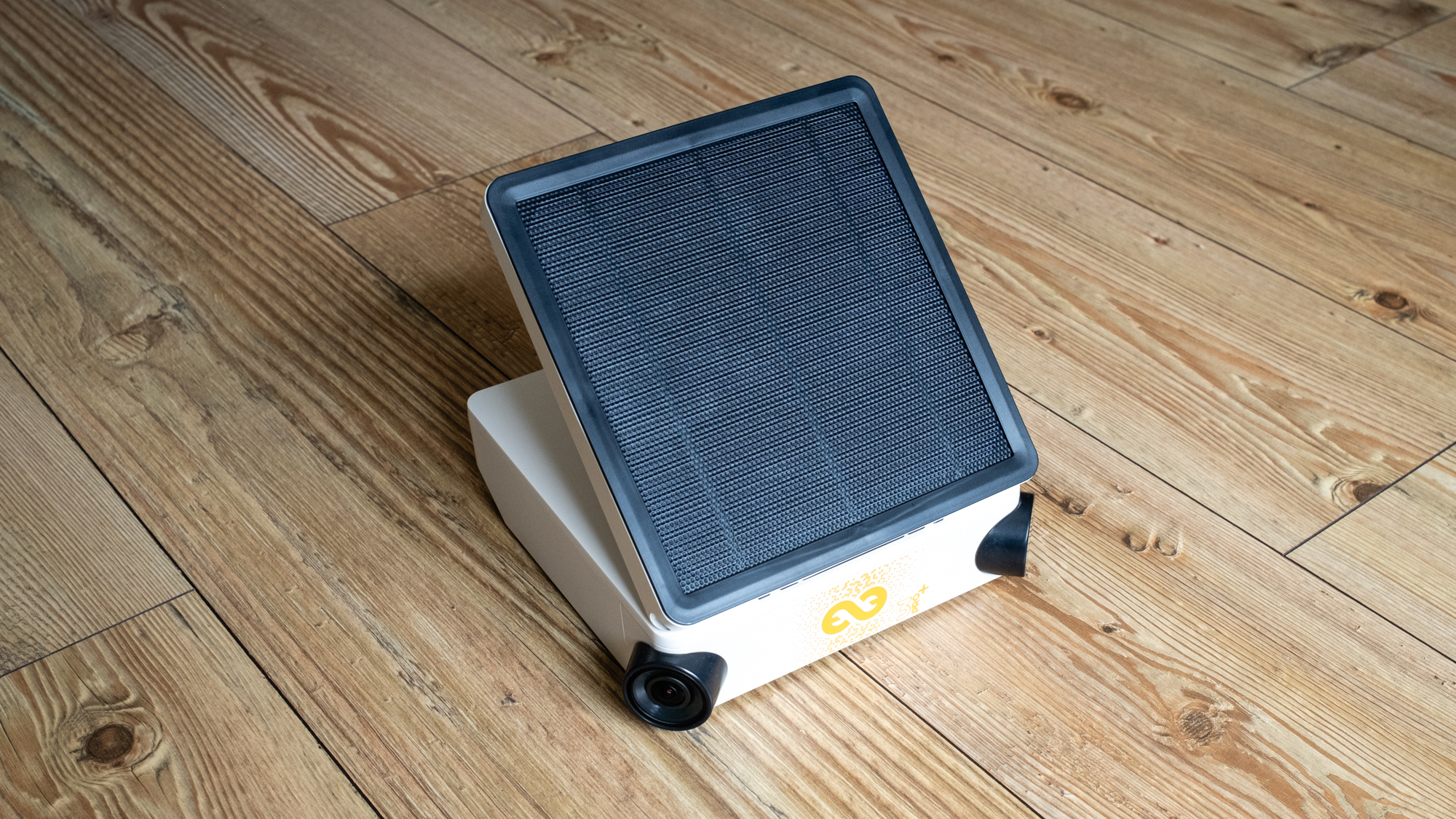Reviews

Polaroid I-2 review
DPReview Latest |
| The new Polaroid I-2 spent four years in development. |
Meet the new Polaroid I-2, a high-end instant camera with full manual controls, LiDAR autofocus and a sharp 98mm f/8 lens. Compatible with all Polaroid film types, including i-Type, 600 and SX-70 film, this is a camera built with advanced users in mind.
Key specs:
- 98mm f/8 lens (∼38mm f/2.8 equiv.)
- LiDAR autofocus
- Manual & auto exposure modes
- Compatible with i-Type, 600 and SX-70 film
- Optical viewfinder with LCD info display
- Internal battery rechargeable via USB-C
- Rear OLED info display
- 2.5mm flash port
- Metal tripod mount
- Bluetooth enabled
Polaroid spent four years developing the I-2 and even tapped retired Olympus engineers for assistance on the AF and lens design. Of course, premium cameras come with premium price tags and the I-2 is no exception: it's available from September 7th, 2023 for $599.
What's in a name?
It's worth mentioning that this camera is manufactured by the Dutch company formerly known as the Impossible Project, which was founded in 2008 after the original Polaroid brand announced plans to shutter.
Though the Polaroid name has been slapped on a wide range of consumer products over the years, from crappy DVD players to comically bad action cams, in 2017, the Impossible Project fully acquired the Polaroid name and its intellectual property.
Index:
What is it, what's new?
 |
| The LiDAR AF sensors sit to the right of the lens. Below that is the optical viewfinder. |
With the I-2, Polaroid engineers set out to combine the best of modern camera technology with traditional design to create the ultimate instant model. And I'd say, they largely succeeded: this is the Polaroid camera to beat in terms of features, build quality and control.
Autofocus & metering
Autofocus is one of the standout features of the I-2 and a relative rarity in the world of instant cameras. Polaroid opted for a LiDAR (Light Detection And Ranging) AF system for the I-2, which works well in all lighting conditions, including dimly lit settings. It also performs admirably at focusing on subjects at great distances. A stepping motor drives focus and though it's a bit noisy, it is generally very quick.
Now, this isn't some advanced 635-point AF system. You get one AF point, located dead center in the frame. Fortunately, a half-press of the shutter allows for focusing and recomposing. When focus is achieved, a distance reading appears in both the viewfinder and rear display.
Metering is center-weighted and the camera also locks the exposure when the shutter is half-pressed. Both the viewfinder and rear panel display metering information. Additionally, if you're using a shutter speed deemed too slow – 1/20 sec or longer – a hand will appear in the bottom right of the viewfinder display to warn you about camera shake.
Manual & auto exposure control
 |
| You can shoot in full manual mode on the I-2, auto, aperture priority or shutter priority. |
In addition to full manual mode, there's also an aperture priority, shutter priority and fully automatic mode. The I-2 also offers an exposure compensation dial allowing users to bias the meter's reading by plus or minus 2 stops, in third-stop increments. The amount of exposure compensation applied is displayed in the finder. Your chosen shutter speed and aperture are shown in both the finder and rear screen.
It's worth noting, the shutter speed range is to 30 sec to 1/250 sec, which could be limiting for fast action. There's also no bulb option.
98mm lens
 |
| You get roughly a 38mm equiv. field of view from the lens. |
The new lens is comprised of three polycarbonate and acrylic lens elements that are treated with an anti-reflective coating. Apertures range from f/8 to f/64. When shooting wide open, you should have no trouble getting a nice separation between your subject and background. Though don't count on any fancy bokeh balls.
Focus is possible from 0.8m (1.3 ft) to infinity. Also, with a ∼38mm equiv. field of view, the I-2's lens is well-suited for a wide range of subjects and disciplines, including candids, street photos, portraits and more.
Other creative features
 |
| Double exposure. By the way, Polaroid images are 3.1 x 3.1 inches (79 x 79mm). |
Other creative features include a multi-exposure mode, which allows for two, three or even four shots to be stacked together. This feature forces the camera into auto mode, though exposure compensation is still available. There's also a self-timer, which can be adjusted from six to 12 seconds and similarly is an auto exposure-only affair.
Body & handling
 |
| The Polaroid I-2 is a well-built camera with a classic design. The exterior is impact-resistant plastic with a 'premium' coating. |
The Polaroid I-2 uses both aluminum alloy and impact-resistant plastic in its construction. Overall, it feels well-built and quite solid in hand. It can definitely survive a bump or two but probably not a fall from more than several feet. The exterior of the lens is constructed of metal as are the control wheels, and a 49mm filter filter thread is available at the front.
The buttons have good tactile response while the previously-mentioned wheels both offer a pleasant clickiness as they turn. In fact, the only aspect of the construction that gives me pause is the weird high-pitched sound the camera makes when switched on. That said, if you're nostalgic for the sound of a dial-up modem, this may do the trick.
Core controls
 |
| The camera has just four buttons, the three you see here and a shutter release. |
Control points are limited. You get a power button, a flash toggle and a button to cycle through the different exposure modes (the oval with the white line). When the flash is on, the lightning bolt symbol glows white. This can be tricky to see in bright light but, fortunately, an additional symbol in the viewfinder also pops up when flash is in use.
 |
| The control wheel sits in front of the exposure compensation wheel. |
The function of the front control wheel varies depending on your shooting mode. In manual mode, it initially adjusts the aperture, however, a quick press of the mode button (the oval with the white line) changes the function to control shutter speed instead.
The exposure compensation dial is disabled in manual mode. But during all other shooting modes, including when using the timer or doing multiple exposures, it's active.
Viewfinder
 |
| The viewfinder is large but glasses wearers may find it difficult to use due to glare. |
You get a nice large viewfinder on the Polaroid I-2 but it's quite susceptible to glare, especially if you wear glasses like me. I also had a difficult time getting my eye close enough to be able to see both the LCD info at the bottom and the entire frame.
That said, the viewfinder is well-aligned with the lens, meaning your images tend to reflect your framing. There's also a parallax correction frame in the finder for close-up shots.
Charging & Connectivity
The I-2 has a built-in lithium-ion battery pack and charges via a USB-C port at the rear. Polaroid says you can expect about 15 packs or 120 shots per charge but we think you'll likely see even better battery life than that. In our testing, the camera arrived 2/3rds charged and remains so after four packs shot, with no top off.
Beside the USB-C port, you'll find a 2.5mm flash sync. While users have no control over the output of the built-in flash, this connection point allows the camera to be paired with a more sophisticated flash unit.
The I-2 also offers Bluetooth connectivity and plays nice with the Polaroid App, available for both Apple and Android devices, giving you some control over the camera and letting you keep the firmware up to date.
Loading film
 |
| The I-2 works with all kinds of Polaroid film, including I-type, 600 and SX-70 film. |
Loading film is easy. A switch on the left side of the camera pops open the film door. Simply slide the old cartridge out and insert a fresh one. You'll want to make sure it's right-side-up and pushed all the way in before closing the door. If loaded correctly, the protective film card will be ejected once the camera is switched on.
The images
 |
| This image was taken using the flash from about four feet away with +2/3EV compensation. |
Image quality from the Polaroid I-2 is solid. The new lens produces sharp shots, even in the corners of the frame. There's still noticeable vignetting but hey, that's the Polaroid way, baby. The autofocus system is also quite reliable. Out of four packs of film, I had only a few frames where the focus was off.
 |
| The I-2 did a great job exposing this image. Shot in auto-exposure mode with flash enabled. |
In terms of exposure, I'd highly advise that even the most well-seasoned shooters start off in auto-exposure mode and then gradually move to the semi-auto modes. Film is pricey and nailing the perfect exposure with this camera takes some trial and error, especially when using the flash, which is fully automatic when on.
Using the flash
In auto-exposure mode, the I-2 is more than capable of balancing flash output with ambient light. The above image, for example, was especially tricky to meter, with such a wide range of shadows and highlights. But the I-2 handled it well. (In fact, it may be my favorite of the bunch.) But it doesn't always get the whole metering thing correct, especially when the flash is involved.
 |
| This image was taken using the flash (and the self-timer). Exposure compensation was set to +2/3EV, however, the frame is a good bit brighter than I expected. |
With a range of just 2.5m (8ft), flash power is limited. Again, users have no control over its output, other than using the aperture to effectively 'dial it down.' Still, any subjects standing beyond that range are likely going to be underexposed. That said, you'll also want to make sure your subjects are standing at least four to five feet (1.2–1.5m) from the camera, otherwise, they'll appear as blown-out blobs.
Limited flash range or not, I found myself leaving the flash on for most shooting scenarios, whether indoors or outdoors. From a composition perspective, it encouraged me to include foreground elements in my shots. The one exception is when (photographing a subject from a great distance.
 |
| This image was also shot with the flash on. I had exposure comp. dialed down -1/3EV, however, the shot came out way darker than anticipated. |
Polaroid color film
Polaroid is far from the only game in town when it comes to instant photography. And some folks, myself included, prefer the saturation and punchiness of Fujifilm's Instax color prints to Polaroids. On the other hand, plenty of other folks prefer the nostalgic, slightly washed-out look of Polaroids. So, to each their own.
 |
| Some may find Polaroid film a bit too washed-out for their taste. |
In addition to being a bit more muted than Instax shots, modern color Polaroid film also appears a touch warmer. Note: The above shot was made from about 1.2m (4ft) away with the flash on. Remember how I mentioned trial and error? I definitely should have given the film boxes a bit more distance.
Polaroid B&W film
 |
|
With a top shutter speed of 1/250 sec, you'll want to ensure your subject is reasonably still when snapping photos without the flash. |
Though Polaroid's color film isn't my personal favorite, I quite like the brand's monochrome offering. Polaroid B&Ws have a lovely, delicate quality to their grain that gives images an almost dream-like aesthetic. The contrast is also fantastic. Whether shooting with or without flash, you're getting a wide tonal range. Plus, Polaroid B&W film packs tend to be a tad cheaper than their color counterparts.
Conclusion
 |
| The Polaroid I-2 is the ultimate camera for advanced instant shooters. |
| What we like | What we don't like |
|---|---|
|
|
Pricey but capable, the I-2 is the best Polaroid camera money can buy in 2023. Its suite of full manual, auto, and semi-auto exposure modes provides plenty of flexibility. The sharp lens outputs fantastic shots and autofocus works with solid reliability. Plus, the camera handles well and looks even cooler.
However, for a lot of folks, the core features of the Polaroid I-2 are going to be overkill. This is especially true given the point-and-shoot style Polaroid Now camera is just $95. It doesn't have as nice a lens or manual controls but it is $500 cheaper. Just think of all the film you could buy with that savings. (Though the prints are significantly smaller.)
 |
| The Polaroid I-2 is Belvedere-approved. |
But the I-2 isn't meant to appeal to the masses, rather it's a niche product for a very specific type of diehard Polaroid shooter. These are folks clinging for dear life to their creeky, twice-rebuilt SX-70 cameras (I know a few). And I believe these are the people who are going to appreciate the I-2 and all it has to offer, even if the price is a bit much to stomach.
The real question is, can Fujifilm respond with an equally capable Instax Wide model to take on the excellent Polaroid I-2? Time will tell. Until then, I'm sticking with I-2.
Scoring
| The Polaroid I-2 is the ultimate instant photographer's camera, with full manual controls, accurate autofocus and a super-sharp lens. But it is pricey and the sheer number of features may overwhelm some users. | |
Good for:Deep-pocket instant shooters. Anyone craving total exposure control over their instant photos. Polaroid diehards. |
Not good for:Those who want an affordable and easy way to snap Polaroids. |
Sample Gallery
Scanned using an Epson V550 scanner in 3200 dpi mode.




